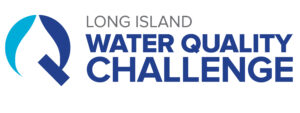A STEAM Challenge that invites students to join the effort to tackle nitrogen pollution.
About the Challenge
The Long Island Water Quality Challenge is a LINAP initiative that promotes project-based learning in Science, Technology, Engineering, Arts, and Mathematics (STEAM) in Long Island schools, encouraging enthusiasm for STEAM learning and an interest in STEAM-related careers.
The Long Island Water Quality Challenge is an opportunity for students in grades 6-12 to play an important role in improving water quality on Long Island by reducing nitrogen pollution on school grounds. Stormwater runoff can transport nitrogen pollution and other contaminants directly into storm drains and waterbodies, without the opportunity for a water treatment facility or soil and plants to filter out excess nitrogen. Excess nitrogen can cause toxic algal blooms that lead to low oxygen conditions, fish kills, and degraded wetlands and marine habitats. Nitrogen also contaminates the groundwater which is the sole source of Long Island’s drinking water.
This year, student teams will create an innovative green infrastructure project to reduce nitrogen pollution on school grounds. Green infrastructure examples include rain gardens and planter boxes, green roofs, permeable pavement, rainwater harvesting, and bioswales – teams can build off an existing idea or create a completely new concept. Student teams will compete with the option of being awarded a grant up to $2,500 to be used for implementation or partial implementation of the winning project design.
Important Dates:
September 22, 2025: Request for Letters of Interest
November 7, 2025: Letters of Interest due
February 6, 2026: Final project proposals submitted
March/April 2026: Awardees announced
May/June 2026: Award Ceremonies
Letter of Interest and Submission Form:
REQUEST FOR LETTERS OF INTEREST AND SUBMISSION FORM
Important Links:
PROJECT PROPOSAL REQUIREMENTS 6TH-8TH GRADES
SCORING RUBRIC 6th – 8th GRADES
PROJECT PROPOSAL REQUIREMENTS 9TH-12TH GRADES
SCORING RUBRIC 9TH-12TH GRADES
GREEN INFRASTRUCTURE FACT SHEET
Frequently Asked Questions:
Q: Is a student allowed to work alone on a project instead of on a team?
A: Yes, we welcome students that work alone as well as in teams. There is no set number of students required to form a team.
Q: Can a school have multiple entries?
A. Yes, a school can have more than one team and submit one proposal per team.
Q: Can a student submit a Letter of Interest on their own?
A: Letters of Interest must be signed and submitted through the school by a teacher or advisor.



